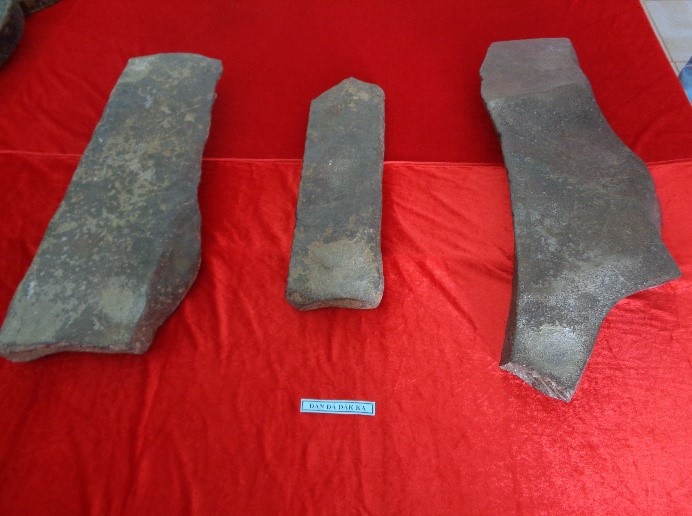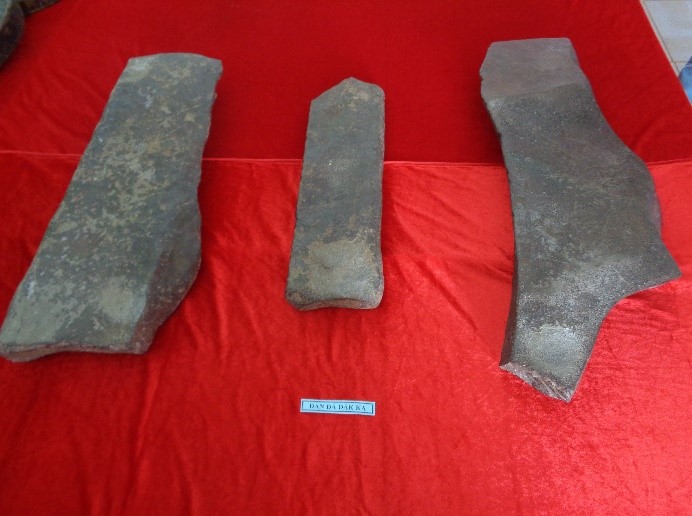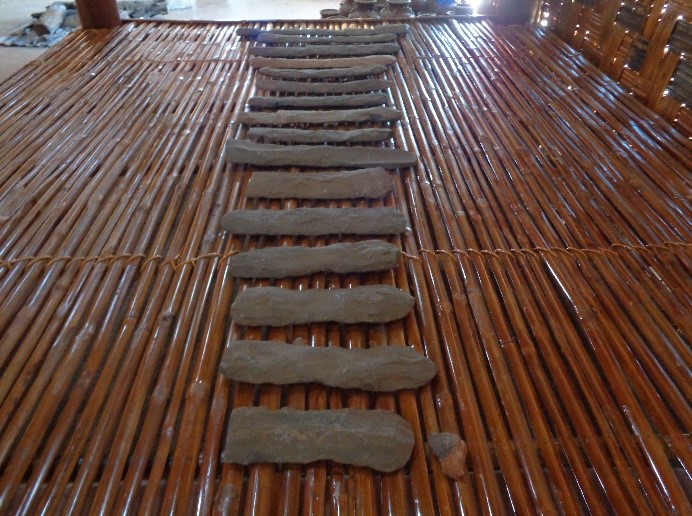
Lithophone, which is "goong lu" in the language of M'Nong ethnic group, meaning "stone sounds like gong", is the oldest musical instrument not only of the ethnic people in the Central Highlands of Vietnam, but also of humanity. It is made of stone bars with different length and thickness. The longer and larger the bar, the lower the sound. The shorter, smaller and thinner the bar, the higher the sound. In 2005, the lithophone was listed by UNESCO as a musical instrument in the Central Highlands space of gong culture.
In Vietnam, the first lithophone set was discovered by the French ethnologist Georges Condominas in 1949 in N'dut Lieng Krat, a village of M'Nong Gar people in Krong No commune, Lak district, Dak Lak province. This about 3000-year-old lithophone is now on display in the Museum of Man in Paris, France.
In Dak Nong, there were two lithophones found respectivedly in 1993 and in 2014. At present, both lithophones are preserved and displayed at the Dak Nong Museum.

Dak Kar Lithophone – Dak Nong UGGp MB
The first lithophone was discovered at Dak Kar stream in Quang Tin commune, Dak R'Lap district, Dak Nong province and was named Dak Kar lithophone. According to the research results of the scientists, it is about 2.500 years old, made from cordierite hornstone. Through milling and processing, prehistoric people created a complete lithophone consisting of 3 bars: T'ru (father) bar, T'ro (mother) bar and Te (child) bar.
The second lithophone was discovered in 2014 in Dak Son village, Nam Xuan commune, Krong No district, Dak Nong province and was named Dak Son lithophone. Dak Son lithophone consists of 16 bars, of which 11 bars were intact, 5 bars were broken in two or more sections but could be patched up to the original form.

Dak Son Lithophone – Dak Nong UGGp MB
Based on the manufacture technique, sound frequency of music sciences, the scientist confirmed that Dak Son lithophone was of the tradition of N'Dut Lieng Krak, a collection of ancient lithophone dating back to about 3,000 years ago.
For M'Nong people in Dak Nong UNESCO Global Geopark, the lithophone shows the harmony and the conquest of human with the nature. Because of this sacred meaning, the instrument was performed during important festivals such as Yang worship, New rice ceremony,... The ancient M'nong people assumed that lithophone sound was a means of connecting human beings to the heaven and the earth, connecting the past with the present and more importantly, bring people to prosperous future.
Bach Van